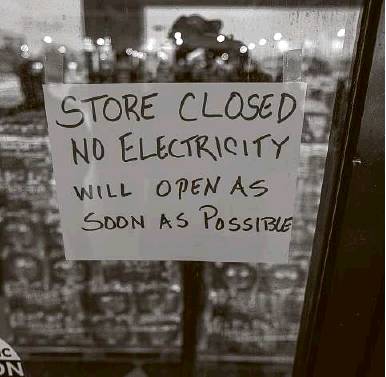Why El Paso and Amarillo kept the lights on
By Sonya Letson and Carol Wallace
Our hearts are broken at the devastation and deaths across our beloved state resulting from last week’s winter storm. We want to share our stories, from two other parts of Texas, in the hope that we can help to prevent this from ever happening again.
In February 2011, El Paso as well as other parts of Texas were hit with an arctic blast that devastated our communities. In El Paso, several days of temperatures of near zero degrees resulted in a collapse of our power grid. We suffered then as the rest of Texas has now: blackouts and frozen water pipes which then burst. El Paso was and still is served by the Western Interconnection power grid, and working with our partners in that grid, El Paso Electric Company upgraded and winterized its equipment so that such a catastrophe would not happen again.
Our Panhandle communities faced the same storm in 2011 and learned the same lessons. Amarillo is served by Xcel Energy, a member of the Southwest Power Pool. The SPP spans 17 states and is part of the Eastern Interconnection. These two major power grids, Eastern and Western, are regulated by the Federal Energy Regulatory Commission, which oversees the interstate transmission of electricity.
Last week, Texas again suffered another arctic blast. For many days, El Paso faced temperatures that dipped into the teens, and the city was coated with snow and ice. Amarillo saw overnight temperatures drop to 10 degrees below zero and snowfall of more than 7 inches. The Eastern and Western Interconnections were strained, but they did not fail, because of careful planning and weatherization efforts by our power companies, regulatory oversight by the Federal Energy Regulatory Commission and the ability to depend on our neighbors.
In contrast to the dire situation across the rest of Texas, our cities experienced only afew controlled outages of very short duration. Many homes never lost electricity at all.
Just south of El Paso is our Mexican border sister city, Juarez. With only the Rio Grande River separating us, we have exactly the same weather. But our neighbors, unfortunately, rely on Texas natural gas, and they suffered with lengthy power outages and frozen and burst water pipes. According to the El Diario de Juarez, a Spanish language newspaper, the power in Juarez was out for two days in many residential areas.
In the ERCOT grid, most of the limitations on the supply of power came from failures of thermal energy sources such as natural gas. Renewable energy sources like wind also went offline, but they make up a much smaller portion of Texas energy sources. ERCOT reported that the majority of lost generation was from non-weatherized infrastructure. While all energy sources failed, they shouldn’t have: other states with much colder and more sustained winter storms have weatherized their power sources to operate properly.
Texas officials knew from the last major winter storm in 2011 that weatherization of infrastructure was needed. Xcel Energy spent the last 10 years upgrading its equipment, as did El Paso Electric. But the Texas Public Utility Commission did not require Texas power suppliers in ERCOT to upgrade, despite numerous warnings and reports that made the danger clear. Instead, they made suggestions for voluntary improvements, leaving it to power companies to decide whether to spend the money to protect consumers. This lack of regulation resulted in catastrophe and loss of life.
This disaster did not need to happen. Had the Texas power grid been upgraded and winterized after the lessons of ten years ago, much of the pain and suffering could have been avoided. Texas government did not do its job in protecting those in the Texas power grid.
Letson is the president of the League of Women Voters of Amarillo, and Wallace is the president of the League of Women Voters of El Paso.
